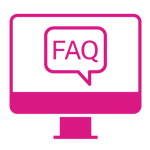
- Home
- >Health professionals
- >Why women should have a breast screen
Why women should have a breast screen
Breast screens save lives
For women aged 50–74, a breast screen (mammogram) is the best way to detect breast cancer early, before changes can be seen or felt.1550 Early detection is the key to improving survival rates, treatment and recovery from breast cancer.1473
Women are more likely to have a mammogram if it is recommended by their doctor.1520
Health professionals – doctors, practice nurses, allied health professionals and community health providers – play a crucial role in supporting women to screen regularly.
While all symptom-free women aged 40+ are eligible to participate in the BreastScreen NSW program, breast screening is particularly recommended for women aged 50–74. Evidence shows that 75% of breast cancers occur in women aged over 50.1471
BreastScreen NSW invites women aged 50–74 to have a breast screen every 2 years.
Unfortunately, only half of all women in this age group currently have a regular mammogram.
As a health professional, you can help encourage women aged 50–74 to participate in regular breast screening.
Breast screening facts to remember
Breast cancer is the most common cancer diagnosed in NSW women – 1 in 7 women will be diagnosed by age 85.1548
Screening is key to increasing the chance of survival – for women aged 50–74, a regular breast screen is the best way to detect breast cancer early. When found early, breast cancers are easier to treat. Women with breast cancer who have regular breast screens have better outcomes than women whose cancer was not detected by a screening program.2528 Women who screen with BreastScreen NSW are less likely to need a mastectomy after diagnosis.1480 Survival rates are also higher.1472 If detected in its earliest stages, a woman’s five-year breast cancer survival rate is 98%. This drops to 43.9% if detected later, when it has spread to other organs.2529
Most women (9 out of 10) diagnosed with breast cancer have no family history of the disease.1477
BreastScreen NSW is for asymptomatic women – Our program recommends women with breast symptoms speak with their doctor as they may require referral for diagnostic testing.
Benefits of screening – A mammogram can detect cancers as small as a grain of rice – before you or your patient can feel or notice any changes.1536 85% of women diagnosed with breast cancer through BreastScreen NSW had no noticeable signs or symptoms.1476
Key messages for women
- BreastScreen NSW services are free.
- A doctor's referral is not required.
- A breast screen appointment takes just 20 minutes.
- Compression lasts only a few seconds.
- You can ask for the breast screen to stop at any time.
- All radiographers are female.



